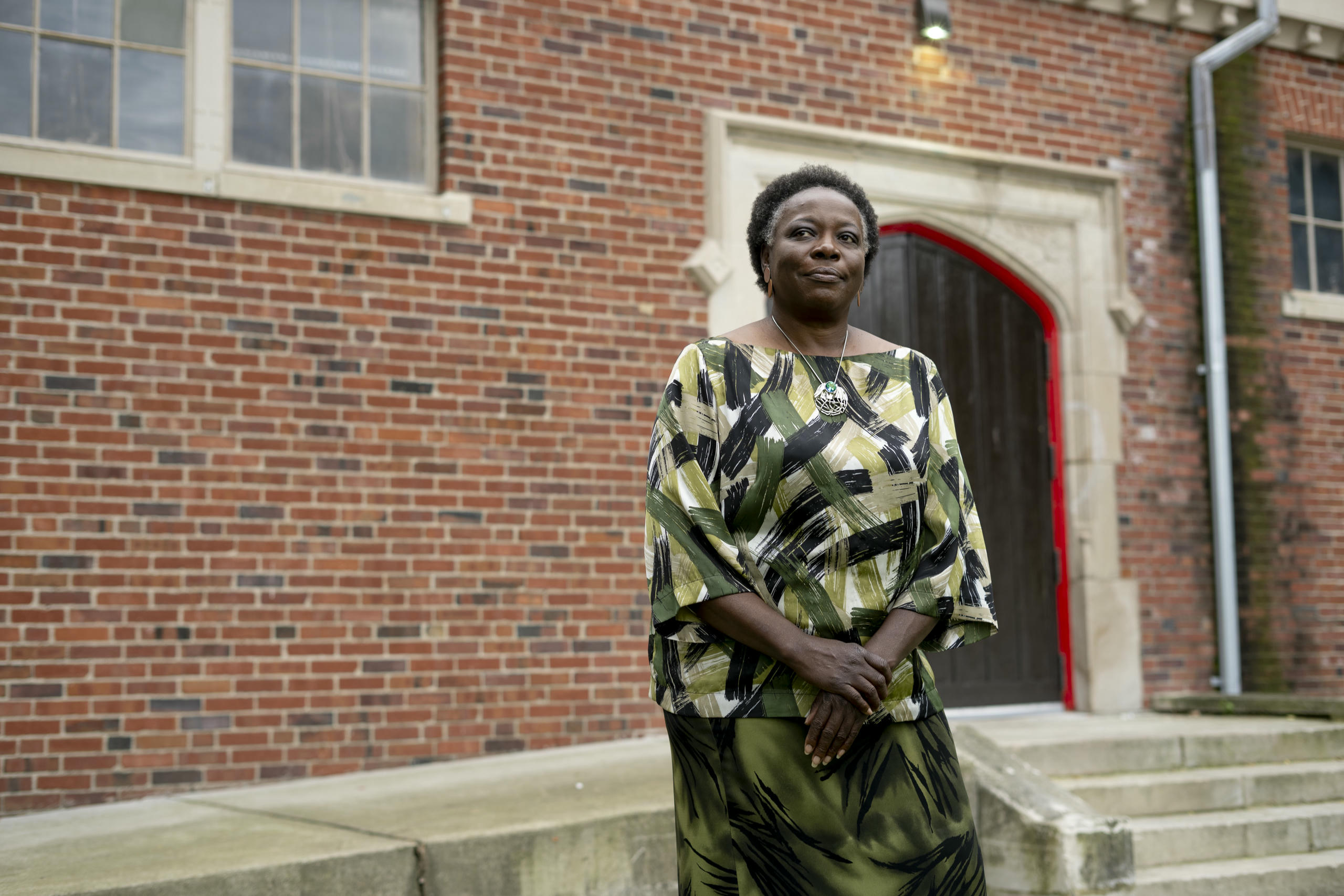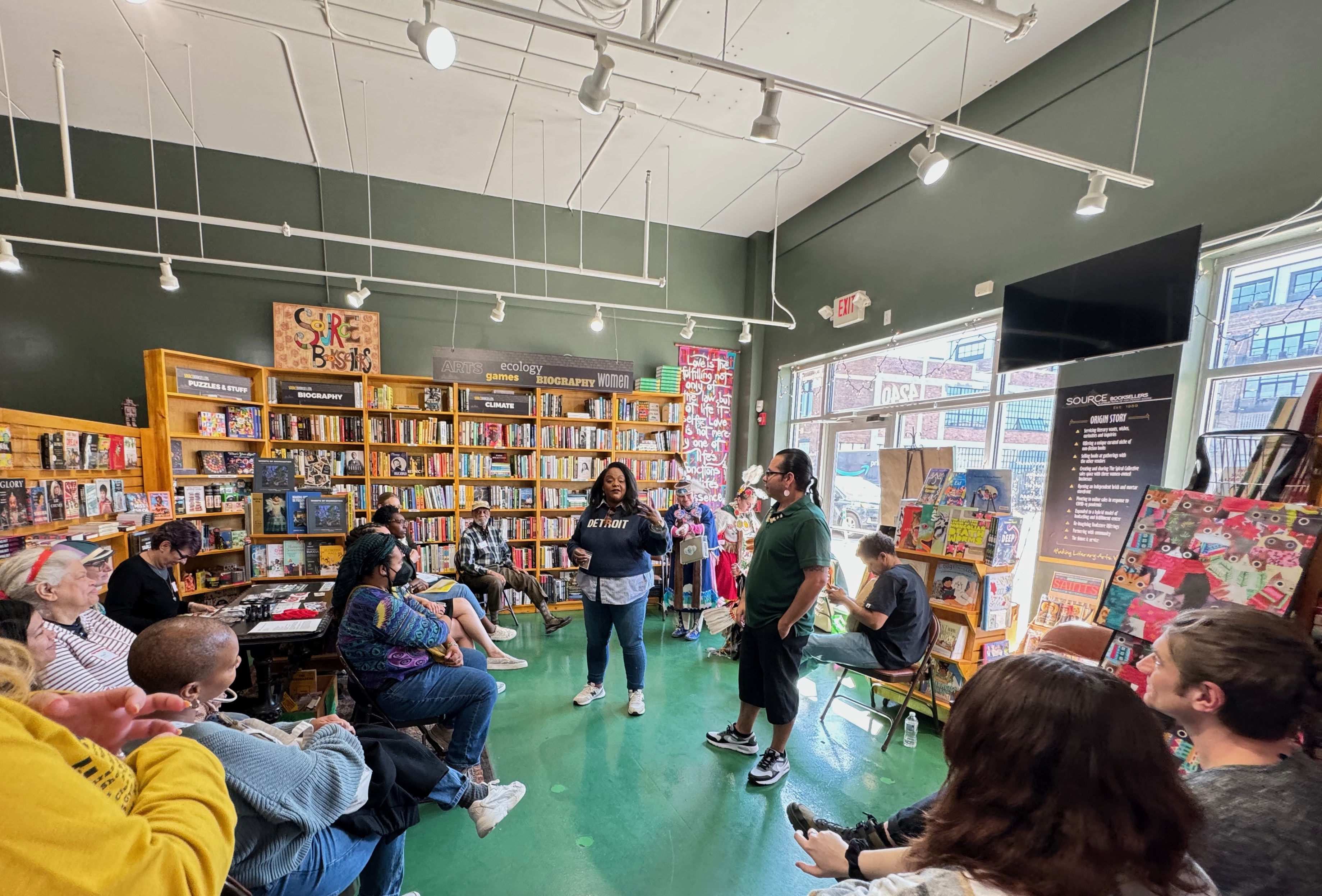Detroiters can be vocal about things they don’t want in their neighborhoods: blight, bike lanes, gentrification. Articulating what they do want is much harder.
The city’s neighborhood planning process may be the best way for residents to do it. And the plan for Detroit’s Cody Rouge and Warrendale areas, which won an American Planning Association award last year, may be the best example of doing it right.
These plans give the City of Detroit and neighborhood organizations a list of actionable ideas to shape or improve places in line with residents’ priorities. The city’s Planning and Development Department likes to say it “co-creates” the plans with residents, typically with help from an outside firm.
The city says it has completed 18 neighborhood framework plans to date, with several more in progress.
The process can sometimes be messy. Residents have at times vocally disagreed with each other or the city about what to prioritize, how to redevelop vacant property, how to alter the street or even the very boundaries of the neighborhood. Some have been disappointed with the outcome of the process, saying their neighborhood’s plan didn’t reflect their wishes or that the city mismanaged its implementation.
The planning process for Cody Rouge — a large neighborhood on the far westside — kicked off in 2019 and produced a final document in July 2022. Some people who were involved in the process said that participants collaborated effectively and that their plan produced results.
“When I go to work or walk down the street and I see something that we worked on during this process, I’m amazed,” said Taylin Hodges, one of several teenagers heavily involved in the plan. “That’s there because we talked about it and we made that happen.”
Cody Rouge, one of Detroit’s largest neighborhoods at more than five square miles, has unique features that make it a good candidate for collaboration and neighborhood representation. The process also stood out in important ways that haven’t yet been replicated in other plans.
Future neighborhood plans may want to borrow from these features of the Cody Rouge plan where possible.
Neighborhood organization buy-in
Cody Rouge has long been home to a number of active neighborhood groups that have done essential work when the city had fewer resources, like maintaining Rouge Park, organizing neighborhood cleanups and building bus stops. They’ve even worked together on at least six previous plans and studies, including ones from the Detroit Economic Growth Corp., Wayne State University and Michigan Community Resources.
The neighborhood groups’ long-term engagement with their constituents and familiarity with each other gave them a leg up in the planning process, according to Damon Rich, a partner at Hector, a design firm from Newark, New Jersey that consulted on the project. Residents had concrete ideas about what they needed and wanted, which helped the participants get things done.
“This area had clearly been doing a lot on their own for a long time,” Rich said. “It was really important to anchor it tightly to the existing agendas of these organizations that have basically been holding the whole part of the city together for years.”
Cody Rouge’s plan had representatives from 11 different groups who formed a steering committee that had 17 monthly meetings. They did outreach and events, as well as their own independent research.
Angy Webb has lived in Cody Rouge for 31 years. She started the Joy Community Association in 2001 to bring together block clubs for monthly meetings and to coordinate on projects.
She said the strong network of groups enabled meaningful involvement from residents.
“There was a lot of grassroots participation,” Webb said. “And we were able to use the feedback of the people in the community to be able to get ideas implemented.”

The voting was entirely democratic and there was a high degree of transparency. Hector took the notes of every meeting from February 2019 to July 2020 — whether it was the steering committee, neighborhood-wide or smaller outings — and made them available to the public.
“Everybody is not going to agree on everything,” Webb said. “But I would say the majority of the people who were involved were very satisfied with how the process went.”
Youth participation
Cody Rouge has the second-highest percentage of people under 18 in Detroit, according to the final framework plan. From the start, the city touted that the plan would be “youth-centric.” That could have been just lip-service, but participants who spoke with Outlier said it was faithfully carried out.
“The people that we worked with on a regular basis treated us like collaborators,” Hodges said.
The city chose Hector as lead consultant because of the firm’s experience working with youth on urban design projects.
“It was really important for us that this wasn’t just a planning youth project or a plan with some youth components on the side,” Rich said. “It was about having young people around all the time and be an important factor in key decisions.”
It helped that Cody Rouge Community Action Alliance already had a youth council that planners could tap into to find engaged teens.
“Our organization focuses on youth development,” said Kenyetta Campbell, the alliance’s executive director. “It was really natural for us to do this, and it was something we wanted to see happen.”
A group of teenage “investigators” from the neighborhood spent two days a week for three months interviewing residents and city officials. Those conversations culminated in a presentation about their findings, which Hodges said around 120 people attended. The teens were also part of the steering committee.
A number of recommendations in the final document came directly from young people’s priorities, like creating a spoken-word performance stage in a park and traffic-calming upgrades so children could safely get to school.
“When I go to work or walk down the street and I see something that we worked on during this process, I’m amazed. That’s there because we talked about it and we made that happen.”
Taylin Hodges, a teenager who was involved in drafting the Cody Rouge and Warrendale Neighborhood Framework Plan
Their presence also had a positive effect on the dialogue itself. Rich said it forced designers and officials to strip away planning jargon in presentations to make the language simpler, which benefited everyone. The teens also helped deescalate heated conversations or dig into difficult topics because they could be vulnerable in ways adults often aren’t.
The process changed the youth for the better, too. Hodges called the experience of working on the plan “eye-opening.” She said it made her a more confident person with a deeper connection to her community.
“I was always interested in volunteer work, but I just figured it would be something I would do on the side,” she said. “But now, I have a passion to make sure whatever work I do, I want it to be giving back in some way.”
The city hasn’t replicated the youth focus of the Cody Rouge plan anywhere else. Dave Walker, director of design for the West Design Region, said the neighborhood was uniquely set up to feature youth.
“There aren’t many situations where you’re going to be able to get a nonprofit with a well-organized youth council that meets regularly,” Walker said. “You need that to make it work.”
Actionable goals
It’s natural to want big, transformative changes for your neighborhood. But Cody Rouge has been able to implement a good chunk of its plan because it was practical.
Rich said participants took a clear-eyed view about what the city said was possible to accomplish within its budget and authority. And they largely stayed within those boundaries.
“The whole process is really about delivering concrete benefits,” Rich said. “Some might say getting people to drive slower, getting some home repair dollars and making the parks a little bit more useful isn’t enough. But we had two years of conversations and deliberations and investigations by a whole set of people who thought getting those things done would be transformative.”

The city and neighborhood groups have put many of the recommendations into place. The city has added bus shelters. It finished the streetscape along West Warren Avenue and updated features in a number of parks. The Detroit Pistons plan to build a new $20 million recreation center next to Brennan Pool.
Cody Rouge Community Action Alliance is developing plans for an apartment building for older adults and a facility with youth programming led by teens. Campbell said they’ve already purchased the buildings and will make formal announcements about the projects later in the summer.
Not everything has come to be. Upgrades to the shopping districts are slow, especially along Joy Road. Home improvement grants are scarce, and two proposed greenways haven’t been built.
The questions for every one of these framework plans are: Will it simply be a historical document, or will it be something residents and the city use to decide how best to continue a neighborhood’s development?
Walker says the city references the framework plans first when deciding what to do in neighborhoods.
Hodges, on the other hand, thinks the document will simply become a “historical record” and that few people in her circle still talk about it today.
“It’s a waiting game to see what the city continues to do with it,” she said. “But right now it feels like it’s something that happened, and now it’s over.”
Several more plans are currently underway, including ones in Brightmoor and Grixdale Farms. Those involved, both the city and residents, would do well to follow Cody Rouge’s example.



